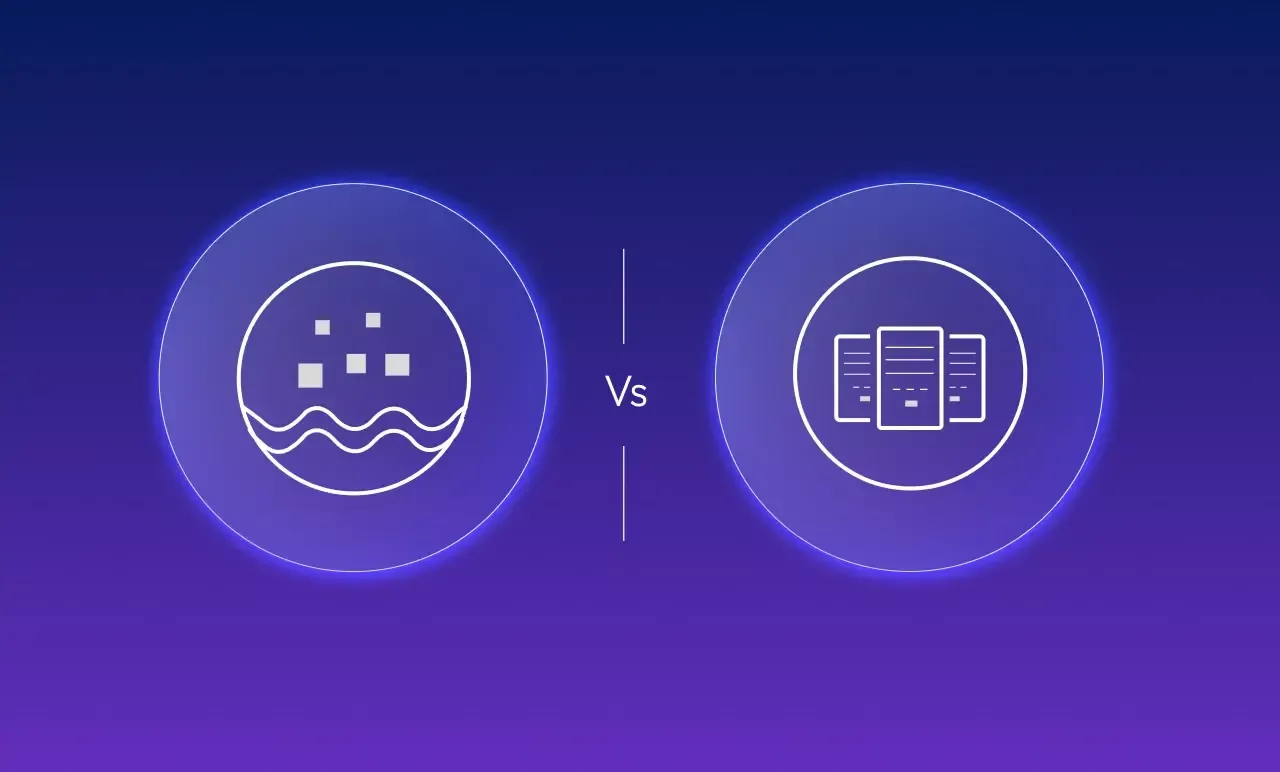Data Storage Decoded: Data Warehouse vs Data Lake Explained
Digital Transformation Strategy and Considerations
Businesses today are under extreme pressure to meet customer expectations, very compact competition, and an alarming requirement for change of their traditional organizational structures. To achieve a singular solution that satisfies all these requirements, Enterprises are choosing the latest technological innovations to revamp their business organization structure, update their tools with agile automation services, and provide a user experience to their customers that is exceptional from their competitors.
The usage of data analysis and compliance services, as well as data security considerations and other tools of automation, including cloud services, have showcased their powers to eliminate gaps that exist within businesses and provide them the opportunity to grow to their full potential in this digitally modernizing world.
The digital transformation market is thus on a constant hike as, according to surveys, it has the ability to benefit businesses with profit and consumer satisfaction. The market is expected to reach USD 3.3 Billion by 2025 (reported by Research and Markets).
However, the essence of digital transformation lies in the fact that each business requirement is different. Thus, businesses are required to tailor a digital transformation strategy that is calculated and uniquely crafted.
Here we will be discussing about -
The Benefits of digital transformation and the Key Considerations that will help businesses to plan their digital transformation Strategy
What is Digital Transformation?
In the simplest terms, digital transformation is the process of improving business operations and value delivery by adopting and implementing trending tech innovations like cloud computing, artificial intelligence, the Internet of Things, and automation services that change the traditional organizational structure of an enterprise into a modern one.
The main objective of digital transformation is to use these trending automation services with respect to business requirements and digitize business operations and processes, which will lead to agility, improve customer experience while delivering business value through various digital software, and transform the business model to one that is driven by data.
Such transformation, if strategically planned, can benefit an organization in so many ways. “Higher profits, saving time and cutting of repetitive work resulting in seamless operation delivery. Software helping to craft the finest digital products and strengthening a business with agility, flexibility, and security are a few benefits that come naturally with a successful digital transformation .”

Why is Planning a Digital Strategy Essential?
The process of digital transformation requires the involvement of all stakeholders and needs to be thoroughly coordinated. There are limitless tech possibilities that can help in a digital transformation journey, but it is important to figure out the needs and choose the right tech gear that will maximize its impact on all the aspects of the Business.
For this reason, planning is the first essential step while beginning the digital transformation journey of a business.
Key Considerations for a successful digital transformation
Evaluate the present situation: The very first step in the digital transformation Journey for a Business is to look around its present condition. From Organizational structures to operational systems and also the values that a brand aims to transfer to its customers, everything should be studied to understand where a company stands at the said time. It is essential to understand a brand’s values and ask questions on how they want to deliver it to their customers.
While evaluating the operational structure, it is necessary to identify the drawbacks and outdated tools that are causing the organization to lag in its growing process. There can be gaps in operational mechanisms or data storage devices, or perhaps the software and hardware might require a revamp. By identifying these inefficiencies, it can be easier to find solutions for them.
Figure out Goals: After knowing about their requirements and necessities, a Brand might formulate its digital transformation strategy that aims to fill the gaps which hinder the company. While making the Strategy, all the business goals should be included. There are a set of different types of tasks that aim to meet a certain goal, and the company continues it for a while during its digital transformation journey. These tasks might aim to achieve different types of goals like:
Foundation goals- The achievement of these basic goals determines the accomplishment of other tasks that benefit the organization.
Quick goals- These goals are achieved by low-effort tasks with high value, presenting benefits immediately.
Accelerative goals- These are long-term goals that contribute to accelerating business growth.
Optimizing goals- The main goal is to upgrade and optimize existing processes and mediums to achieve other tasks.
Apply Slow Changes: The digital transformation process cannot be achieved overnight. Businesses are based on rigid mechanisms that have solidified over years and years, and bending them without breaking them is a lengthy process. Transformation is a journey that is achieved through small but impactful changes that must be followed by the entire team of the brand. Slow changes help to skip any bad feedback from the customers at large and allows choosing the changes which can be fully implemented by the company without any risks.
Implement the right Technologies: There are hundreds of technological solutions to choose from, but the right technology will be the one that solves most of your problems with a reasonable investment. To name a few of the trending tech innovations that are driving businesses in the present age, mention can be made of Cloud Computing, Iots, Artificial Intelligence and Virtual Intelligence, Machine learning, and the like.
Choose tech for the future and thus invest in long-term solutions rather than cheaper alternatives that can be outdated in a few years. Moreover, with technology, it is necessary to modernize the operational processes and thus change the culture of the employees.

Connect with experts: Reach out to the people who know more about the trending technologies and ask questions. Having opinions of experts regarding the right technology for your business can save you the cost of other unnecessary installments. Seek for partners who have the ability to accelerate your company’s growth and accomplish tasks conveniently, not the ones who lack knowledge in what they do.
Communicate through Changes: Humans are generally skeptical about changes and technological transformations are huge. Thus cultural changes within the organization are inevitable. The leadership team must communicate the company’s vision of digital transformation to their employees and support them through their mistakes. Adapting to a changing environment can cause initial problems in the employee’s work delivery but the leaders should encourage them and keep them motivated to accept changes. Apart from these, It is also important to realize the projects that can help to gain the confidence of the employees and enhance their productivity.
Deliver Changes and Accept feedback; Repeat: The unique thing about digital transformation is that it is a journey which requires you to go back in order to keep moving forward. After implementing changes it is required to collect feedback from your employees and customers and make the other set of changes according to it. It depends upon the agility of an organization, and how influential its digital transformation journey would be. Your level of adaptability and willingness to go through changes, makes you emerge from disruptions.
Thus, digital transformation is the process of paving the way for the digital future for all companies and enterprises that revolve around data and operate through machine intelligence and connectivity. This process will form newer systems and business modules that will be fully dependent on futuristic technologies. Digital transformation is an unending journey which aims to fully unlock the potential of a brand and give it a different position in the global digital space.
To start your digital transformation journey, Connect with Sundew.
Email us or Talk to us at +91-98367-81929 or Simply Contact Us through the website.
Let's Connect











